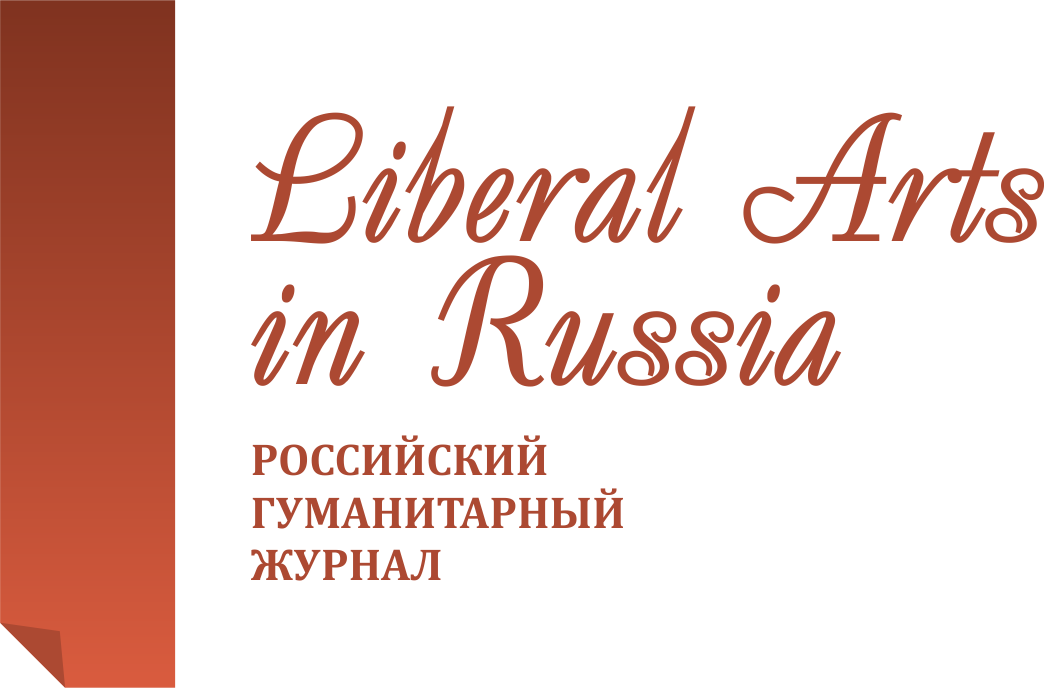F. M. Dostoevsky and P. J. B. Nougaret: Two Versions of the Same Archetypal Image
Liberal Arts in Russia. 2014. Vol. 3. No. 5. Pp. 342-353.
Get the full text (Russian) Email: irlxx@yandex.ruAbstract
The autor investigates a special aspect of a fundamental and immediate problem for Russian literary science, namely “F. M. Dostoevsky and literary tradition in the XVIII century”. “The Old Man”, a novella by French writer P. J. B. Nougaret from his prose cycle “Les passions différents âges, ou le tableau des folies du siècle” (1766), is seen as an important element of the paradigmatic context in F. M. Dostoevsky’s novella “Dyadushkin son” (“Uncle’s Dream”). A parralel character analysis, “Baron Osbrun - Prince K.”, reveals significant differences in the autors’ strategies to foreground the archetypal images of a youthy and smart old man, so firmly entrenched in antiquity. The apparent similarity in the satiric portrayal of elderly characters, based on the combination of Aristophanes grotesque, gallant (courteous) and anacreontic codes, emphasizes a striking difference in the behavior of Baron Osbrun and Prince Gavrila in the same situation - “public disclosure of the secrets of a youthy old man”. This character parallel gives a clear-cut idea of how Dostoevsky transformed the archetypal image of a youthy old man, shows notional depth and esthetic complexity of the tragicomic character of Prince-“dyadushka”(Uncle).
Keywords
- • F. M. Dostoevsky
- • paradigmatic context
- • intertextuality
- • archetypal image
- • tragicomic
References
- Ashimbaeva N. T. Dostoevskii i mirovaya kul'tura. M., 1997. No. 9. Pp. 57–66.
- Vovenarg, L. de Klap'e de. Vvedenie v poznanie chelovecheskogo razuma. Fragmenty. Kriticheskie zamechaniya. Razmyshleniya i maksimy [Introduction to the Knowledge of Human Mind. Fragments. Criticisms. Reflections and Maxims]. Leningrad: Nauka, 1988.
- Derzhavin G. R. Anakreonticheskie pesni [Anacreontic Songs]. Moscow: Nauka, 1987.
- Dostoevskii F. M. Polnoe sobranie sochinenii v 30 t. [Complete Works in 30 volumes]. Leningrad: Nauka, 1972. Vol. 2.
- Kartina glupostei nyneshnego veka, ili Strastei razlichnogo vozrasta. Sochinenie G. N. [Picture of the Follies of the Present Century or the Passions of Different Ages. Essay of G. N.] Moscow: v Universitet-skoi tipografii u N. Novikova, 1783.
- Kibal'nik S. A. Problemy intertekstual'noi poetiki Dostoevskogo [Problems of Intertextual Poetics of Dostoevsky]. Saint Petersburg: Petropolis, 2013.
- Labryuier Zh. de. Kharaktery, ili Nravy nyneshnego veka [The Characters, or the Manners of the Present Age]. Moscow: AST, 2001.
- Laroshfuko F. de. Maksimy. Memuary [Maxims. Memoirs]. Moscow: AST, 2003.
- Rotterdamskii Erazm. Pokhvala Gluposti [The Praise of Folly]. Moscow: Khudozhestvennaya literatura, 1983.
- Tunimanov V. A. Tvorchestvo F. M. Dostoevskogo 1854–1862 [The Work of F. M. Dostoevsky 1854-1862]. Leningrad: Nauka. 1980.
- Tynyanov Yu. N. Poetika. Istoriya literatury. Kino. Moscow: Nauka, 1977. Pp. 198–226.
- Fontenel' B. Rassuzhdeniya o religii, prirode i razume [Reasoning about Religion, Nature, and Mind]. Moscow: Mysl', 1979.
- Yakubova R. Kh. Tvorchestvo F. M. Dostoevskogo i khudozhestvennaya kul'tura. Ufa: Gilem, 2003. Pp. 132–139.
